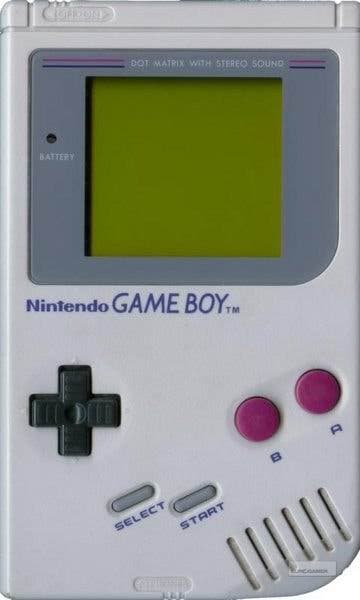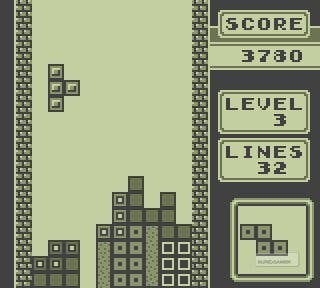Retrospective: Nintendo's Handheld Legacy
From Game & Watch to the DSi.
Game Boy
In the glitzy and somewhat clinical Nintendo Store wedged into an expensive corner of New York's Rockerfeller Plaza, shoppers can goggle at a Game Boy that was wounded in action in the first Gulf War. Frazzled and warped, its buttons melted down to little nubs while its smooth grey case is transformed into something that looks like an Artex rush job, it's a fascinating object to stand and stare at, before you load up on Pokemon plushes and glance around for any sign of Tina Fey.
And, inevitably, this particular casualty of war still works: battered it may be, but it's doggedly humming the Tetris music to itself, conjuring those familiar sequences of blocks on its shiny green and yellow screen. It will probably still be doing that on the day that the Earth is finally torn apart by the sun, if there are any AA batteries lying around at that point.
One of the many things Nintendo got right with the Game Boy, then, was the understanding that, for handheld gaming to really take off, you had to be comfortable taking your handheld console around with you wherever you went. They had to be durable and reliable: the kind of thing you wouldn't worry about slinging into a backpack with a muddy football kit, or dropping out of a car window - the sort of thing, in other words, you wouldn't mind taking along on Operation Desert Storm.
So while the first Game Boy was ridiculously bulky by modern standards - if people did try to mug you for it on the mean streets of Sutton, you could probably use it to cave their heads in - it felt trusty: a reassuring weight in your hands, a coating of industrial - almost institutional - grey plastic, and a screen that wouldn't have looked out of place on an oscilloscope back in the 1940s.

That screen was an important piece of the puzzle too: crude even by the standards of the late eighties, it was central to Yokoi's low cost, low battery consumption plan. At times, getting the unlit screen to reflect any light at all could be extremely annoying, but at least you could play the Game Boy for longer than two hours in any one sitting.
Yokoi's gambles paid off: while a handful of other companies were starting to think about moving console experiences out from under the TVs and into players' hands, Yokoi was the first to truly understand that the technology didn't have to be good, it had to merely be good enough. Nobody looked at the Game Boy's urine-coloured display and thought: "Ooh, this will be nice to stare at for the next 10 years," but it didn't matter. The software would take care of that kind of thing, and all the device itself should do is make sure that the software runs, and that people can afford to buy it.
Released in 1989, and bundled with a certain Russian puzzle game, the Game Boy was an instant success: its homely yet still rather beautiful design was supported by some great titles and the initial US consignment of a million units was gone in the blink of an eye. Mario was present on the rosters, although in a series of mirror-world Mario Land games which, designed by Yokoi's team, never really felt quite right, while elsewhere F-Zero, Metroid, and Zelda all got stand-out instalments - Link's Awakening, with its jumping and side-scrolling moments, remains one of the series' greatest gems.
Then, of course, there was Tetris, the snuggest convergence of hardware and software of all time, and the result of a dizzyingly complex legal battle that Nintendo knew it simply had to win. Yokoi may have designed the Game Boy, but Tetris was the purest explanation of what it should do, and, besides, it never hurts to have your console ship alongside the most brilliant piece of game design the world has ever seen.

Game Boy also had Pokemon, justifying the Game Boy link cable, and keeping the cheap handhold not only relevant, but chart-dominatingly so, right through to the age of the PS2.
Aside from yearly iterations of bug-hunting games, there's one other trend the Game Boy started: you'd buy it, again and again, in slightly different variations, none of which would be entirely perfect, yet all of which were strangely alluring. Released in 1996, the Game Boy Pocket de-greened the screen and shrunk the overall package so it would fit, really uncomfortably, into large cargo pants, while the Game Boy Colour came along in 1998, bringing Game Boy games just about into line with the kind of thing the NES had been capable of.
With over 100 million Game Boys sold, and an absolutely insane menagerie of add-ons ranging from cameras and printers to titles that came with tilt sensors, the Game Boy has lived a billion lives, and inhabited a handful of different skins, like the technological equivalent of a time lord. The result is a genuine videogame classic: a device that changed the industry by simultaneously aiming very low and very high all at the same time. Any contemporary competitors, quite simply put, were screwed.
